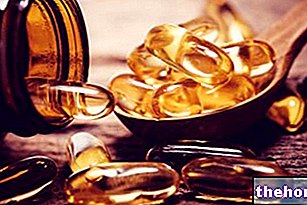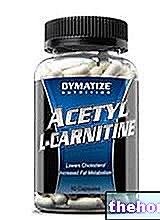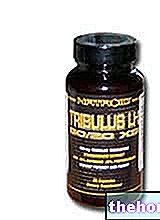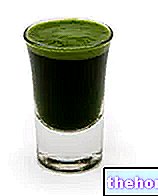
About AMINO-4 complex - ANDERSON
AMINO-4 complex - ANDERSON
Food supplement of branched chain amino acids with Arginine alpha keto-glutarate, Zinc monomethionine and vitamin B6
FORMAT
Pack of 60/100/200 tablets
INGREDIENTS: L-Leucine - L-Isoleucine - L-Valine - Arginine alpha keto-glutarate - Stabilizer: microcrystalline cellulose - Anti-caking agents: magnesium stearate, silica dioxide - Zinc monomethionine - Vitamin B6
For 5 tablets: L-leucine 2500 mg - L-valine 1250 mg - L-isoleucine 1250 mg - Arginine alpha keto-glutarate 625 mg - Zinc monomethionine 17 mg - Vitamin B6 2 mg

The metabolism of branched chain amino acids, mainly muscular, is due to the presence of two key enzymes, BCAT and BCKD, which initiate their catabolism, subsequently directing it towards specific products, according to the physiological and nutritional needs of the organism. important of the branched-chain amino acids there is certainly the plastic one, since they significantly influence the protein structure and its function, especially of transmembrane proteins fundamental in regulating cellular function. metabolic role that guarantees:
- Energy production through oxidation;
- Glucose synthesis by gluconeogenesis and glucose-alanine cycle, and related insulinemic response;
- Increase in plasma levels of glutamine, essential for both detoxification and maintenance of the athlete's immune defenses;
- Reduction of plasma levels of aromatic amino acids, with a consequent decrease in the synthesis of associated neurotransmitter.
BCAA in sports practice
The metabolic and plastic effects listed above are only the means necessary to achieve the athlete's goals. In fact, in sports, BCAAs are used in order to:
- Reduce proteolysis induced by strenuous exercise: branched-chain amino acids, in fact, could provide the energy surplus necessary to delay the onset of muscle amino acid catabolism. Several research groups seem to agree in believing this effect possible, also thanks to experimental data that show a net decrease in markers of tissue damage, such as creatine kinase and lactic dehydrogenase, following strenuous exercise;
- Reduce the feeling of fatigue: action that would take place through an inhibitory effect on the release of aromatic amino acids on the one hand, and through a competitive effect against tryptophan, in crossing the blood-brain barrier, on the other. This results in a reduction in the synthesis of serotonin, a neurotransmitter involved in the onset of the sensation of fatigue.
- Improve the body's anabolic abilities: thanks to the ability to stimulate insulin secretion and to the modulating action against its intracellular signal, with a significant improvement in protein synthesis. To this effect is added another, still much discussed, observed by some research groups, which is it would explain with the increase of anabolic hormones, such as testosterone and GH, and with the reduction of the catabolic hormone par excellence: cortisol.
To date, however, the most reproducible effects, therefore the most reliable, are those relating to the protective action against muscle tissue (anticatabolic action) and the ability to reduce the sensation of fatigue. However, these effects do not correspond to a significant improvement. direct, of the performance
Arginine alpha keto glutarate: salt of arginine consisting of two molecules of arginine joined by one of alpha keto glutarate. Arginine is a semi-essential amino acid that needs to be taken through the diet, especially in case of increased need, which is achieved even after an "intense physical activity." Arginine is essential in numerous biological reactions, including:
- in the urea cycle, facilitating the elimination of waste products deriving from amino acid oxidation;
- In the gluconeogenic process, by supplying the body with glucose in case of energy deficiency,
- In the processes of protein synthesis, exerting a plastic function;
- In the metabolism of endothelial-derived nitric oxide.
L "alpha ketoglutarate, is a very important keto acid from the metabolic point of view; in fact it represents a crossroads between catabolic and anabolic reactions. This molecule falls within:
- in the krebs cycle, thus favoring the production of energy;
- in the gluconeogenic process, allowing the synthesis of glucose starting from non-carbohydrate sources,
- in the synthesis of some amino acids such as glutamate, then glutamine, proline and arginine.
- In enhancing collagen synthesis;
- In preserving the protein component in patients with kidney disease and severe malnutrition (still experimental studies).
Arginine and sports: for some time now, several sportsmen have been using this supplement in the hope of obtaining the following results:
- Increased release of growth hormone;
- Increase in lean mass;
- Best sports performance;
- Increase of resistive capacities and maximum force.
- Increase in nitric oxide levels: able to promote vasodilation processes.
The metabolic effect of arginine and alpha ketoglutarate could also be useful in energetically supporting the cell, and in improving the muscle recovery phase by preserving the muscle from proteolysis and increasing protein synthesis.
AAKG rationale
The studies in which a significant increase in plasma levels of GH is manifested are somewhat discussed, while the ergogenic capacity seems to be more certain, which results in an increase in the maximum peak of strength and in the delay in the onset of anaerobic metabolism.
Zinc monomethionine: form more available than that complexed with phytic acid present in products of plant origin, is absorbed in the intestine and subsequently concentrated in various tissues and in particular in bones, skin, liver, muscles and hair, where it is part of numerous biological reactions necessary to guarantee the correct process of growth and differentiation, of tissue repair, of modulation of hormonal activity, of regulation of the immune response and of protection against oxidative insults. Its requirement, attested between 7 and 10 mg per day, tends to increase significantly following intense physical activity, in which the urinary secretion of this trace element increases significantly, accompanied by a decline in the contractile and energy capacity of the muscle. Furthermore, studies conducted at zinc concentrations equal to 3mg / kg / day, have made it possible to effectively counteract the drop in hormones such as testosteorone and thyroid hormones following intense exercise. Despite the potential benefits that derive from a correct supplementation, it must be considered that a surplus of zinc is effectively disposed of through an increase in urinary secretion. Deficits of this element, although rare, can affect some risk categories, resulting in a delay in sexual maturation, skin rashes, chronic and profuse diarrhea, asthenia, loss of appetite, immune system deficiency and general malaise.
Vitamin B6: pyridine derivative introduced mainly through foods of animal origin. This vitamin is absorbed in the fasting state, after ATP-dependent hydrolysis, and reaches the liver bound to albumin. Here it is transformed into pyridosamine, then into pyridoxal and subsequently phosphorylated, with consequent activation and storage. From the liver it will then be released into the non-circulating circulation. phosphorylated, to reach the various tissues where, once re-phosphorylated, it will be able to carry out its biological role.
- It increases blood glucose levels: it favors glycogenolysis and gluconegoenesis;
- Guarantees correct amino acid oxidation and transamination processes;
- Promotes the synthesis of neurotransmitters such as serotonin, dopamine, norepinephrine and GABA.
- Guides the synthesis of the heme group, necessary for hemoglobin to bind oxygen;
- It allows the synthesis of Niacin, starting from tryptophan;
- Modulates the hormonal action;
Its daily requirement is around 1 / 1.5 mg, but even in this case the cases of deficiency are very rare.
Product features - AMINO-4 complex - ANDERSON
The product in question associates other important nutrients with branched-chain amino acids, such as vitamin B6, zinc and arginine alpha-ketoglutarate. Interesting and innovative is the association between BCAA and zinc, which proved effective in a recent study in improving protein metabolism in individuals suffering from cirrhosis of the liver, while there is a lack of data on its use in sports. The synergy with arginine, on the other hand, is more proven, capable of enhancing the anabolic effects in post work-out. Vitamin B6, on the other hand, should guarantee a better use of BCAAs .
Method of use recommended by the company - AMINO-4 complex - ANDERSON
Mix a portion of 5g (one heaped teaspoon) in 300-400ml of water, fruit juice or your favorite beverage. Take before and / or after training.
Directions for use in sports - AMINO-4 complex - ANDERSON
In order to define an optimal dosage of the product in question, effective supplementary protocols must be considered for the individual elements.
Therefore, while the 5 tablets provided by the manufacturer can satisfy the average requirement (83mg / kg / day) of BCAA for a 70 kg man, they cannot reach significant values for arginine (effective in a range between 2 and 8 mg / day) and for zinc (effective at 3 mg / kg / day).
To this must be added the fact that the dosage of BCAA should also be calculated on the basis of the diet and the nutritional and physio-pathological state of the athlete.
However, the advice to take on an empty stomach is always valid, dividing the dose into pre and post work out according to the needs of the athlete.
AMINO-4 complex synergies - ANDERSON
BCAA + Arginine: a study carried out on 8 healthy volunteers shows a significant reduction in phenylalanine levels (marker of muscle proteolysis) following physical exercise preceded by integration with 2 g of BCAA and 0.5 g of arginine.
BCAA + Carbohydrates: some studies show a useful synergy to reduce the feeling of fatigue during athletic performance (potential role of BCAAs), and improve performance (energy role of carbohydrates). In the post work out, however, AACs seem to improve insulin sensitivity, therefore the resynthesis of glycogen in the presence of CHO, while high glycemic index carbohydrates, by increasing insulin secretion, can both favor the absorption of the same BCAAs and support the anabolic phase
AMINO-4 complex side effects - ANDERSON
Known are the long-term side effects of a diet too rich in protein or amino acids. Damage to the kidney, dehydration induced by increased urinary secretion, lipidemic alterations and associated pathologies, tissue acidosis and bone demineralization, are just some of the consequences of a prolonged unbalanced diet.
Acute BCAA ingestion appears to be well tolerated and free from side effects, even when concentrations rise to 450mg per pound of body mass.
Precautions for use AMINO-4 complex - ANDERSON
The product is contraindicated in cases of renal or hepatic pathology, cardiovascular disease and / or hypertension, in pregnancy, during lactation, under 12 years and in adolescents not yet trained.
In case of prolonged use (over 6/8 weeks) the doctor's opinion is necessary.
This article, elaborated on the critical rereading of scientific articles, university texts and common practice, is for information purposes only and therefore has no medical prescription value. It is therefore always required to consult your doctor, nutritionist or pharmacist before undertaking the use of any supplement.. Learn more about the critical analysis of AMINO-4 complex - ANDERSON.
J Strength Cond Res. 2010 Apr 7. [Epub ahead of print]
BCAA Supplementation Lowers Perceived Exertion But Does Not Affect Performance in Untrained Males.
Greer BK, White JP, Arguello EM, Haymes EM.
J Strength Cond Res. 2010 Apr; 24: 1125-30.
Sharp CP, Pearson DR.
J Sports Med Phys Fitness. 2009 Dec; 49: 424-31.
Matsumoto K, Koba T, Hamada K, Sakurai M, Higuchi T, Miyata H.
J Nutr Sci Vitaminol (Tokyo). 2009 Jun; 55: 288-91.
Shimomura Y, Kobayashi H, Mawatari K, Akita K, Inaguma A, Watanabe S, Bajotto G, Sato J.
Int J Sport Nutr Exerc Metab. 2007 Dec; 17: 595-607.
Greer BK, Woodard JL, White JP, Arguello EM, Haymes EM.
Int J Sports Med. 2007 Jun; 28: 531-8. Epub 2007 May 11.
Matsumoto K, Mizuno M, Mizuno T, Dilling-Hansen B, Lahoz A, Bertelsen V, Münster H, Jordening H, Hamada K, Doi T.
Med Sci Sports Exerc. 1998 Jan; 30: 83-91.
Mittleman KD, Ricci MR, Bailey SP.
Sports Med. 1995 Sep; 20: 160-88.
Meeusen R, De Meirleir K.
Amino Acids. 2001; 20: 1-11.
De Palo EF, Gatti R, Cappellin E, Schiraldi C, De Palo CB, Spinella P.
J Sports Med Phys Fitness. 2000 Sep; 40: 240-6.
Coombes JS, McNaughton LR.
Sports Med. 1999 Jun; 27: 347-58.
Mero A.
and to allow maintenance of a high level of performance.
J Cell Biochem. 2010 May 12. [Epub ahead of print]
Higuchi N, Kato M, Miyazaki M, Tanaka M, Kohjima M, Ito T, Nakamuta M, Enjoji M, Kotoh K, Takayanagi R.
Adipose tissue branched chain amino acid (BCAA) metabolism modulates circulating BCAA levels.
Herman MA, She P, Peroni OD, Lynch CJ, Kahn BB.
J Biol Chem. 2010 Apr 9; 285: 11348-56. Epub 2010 Jan 21.
http://jn.nutrition.org/cgi/content/full/135/6/1547S
Int J Sports Med. 2007 Jun; 28: 531-8. Epub 2007 May 11.
Matsumoto K, Mizuno M, Mizuno T, Dilling-Hansen B, Lahoz A, Bertelsen V, Münster H, Jordening H, Hamada K, Doi T.




























